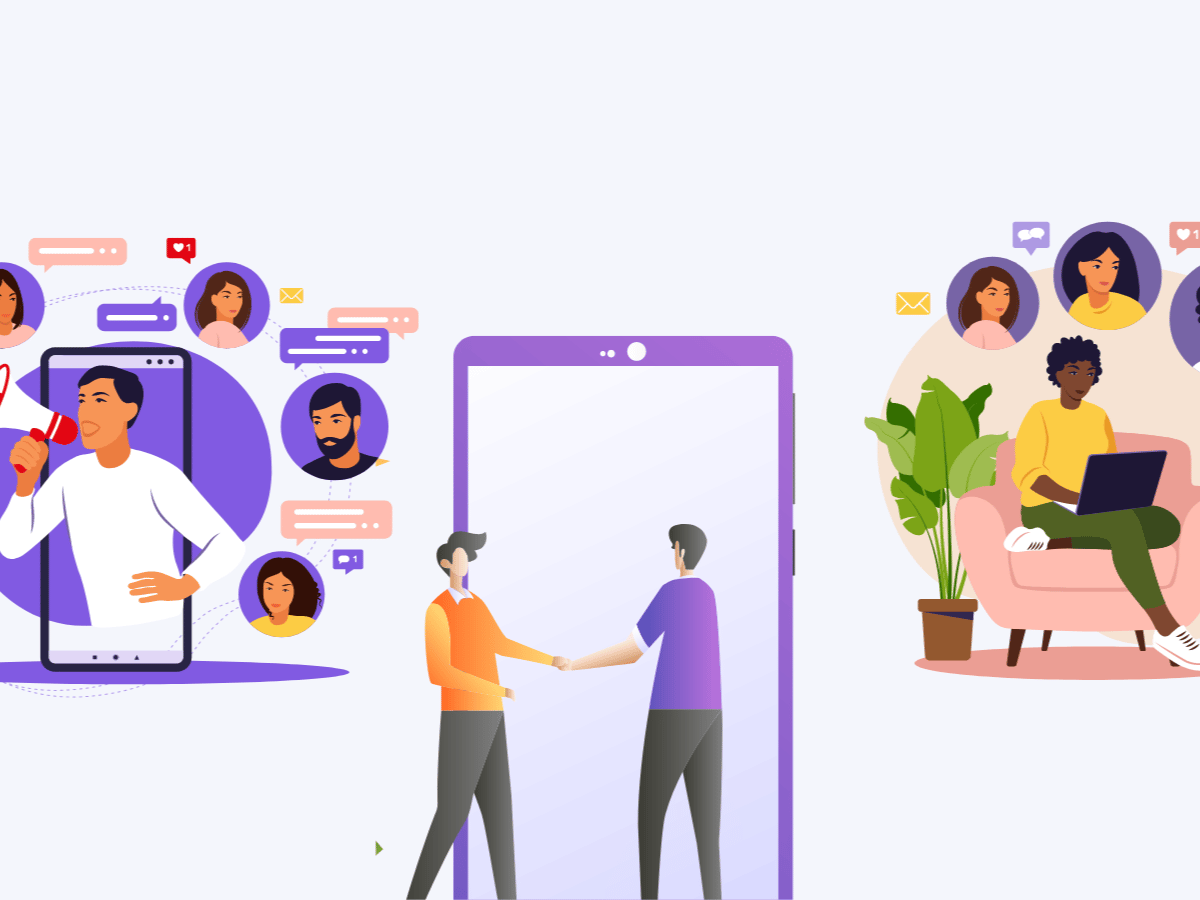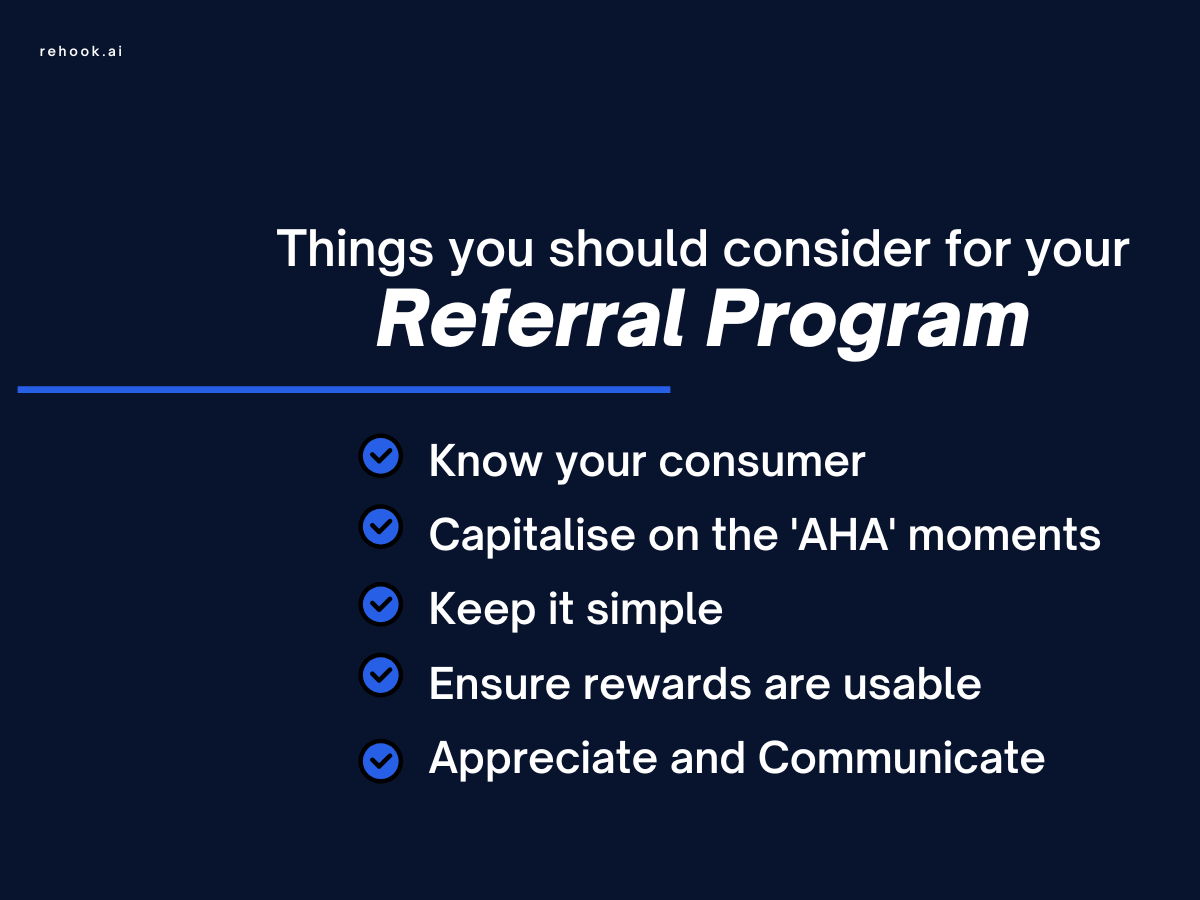
5 Successful Referral Programs to Inspire Your Own
Referral programs can reduce customer acquisition costs, increase retention and help in building a loyal customer base. Check out these top 5 referral programs and see what you can apply to your business.
Incentivising your current users to bring in new customers to your brand constitutes a referral program. Referral programs have very clear benefits and have become an essential part of every business’s growth strategy.
A Harvard study found that having a well formed referral program can increase your profits by as much as 16%.
Simply put, when an existing customer refers someone they know to use your product or service, and that person signs up, the existing customer is rewarded.
The core benefits of a referral program for a business:
- Reducing customer acquisition costs
- Retention and selling more to existing customers (using referral rewards)
- Building trust quickly with referred users (people tend to purchase quickly if someone they know refers them)
- Higher customer lifetime value
- Building loyalty and brand advocacy among both old and new customers.
Companies that run effective referral programs report 59% higher LTV and 71% higher conversion rates
Are you planning to start a referral program for your business? We've got you covered.
Things to think about while building a referral program for your brand:
- Know your customers- This would help you design referral rewards that are aligned with your customer's needs and help move the needle. It will also help tailor your program.
- Capitalise on 'AHA' moments- The best time to ask your users to refer your brand to someone is when they are satisfied with your brand. Use these moments and events well to get more users.
- Do not over complicate- Do not confuse your users with long drawn out rules and terms. Keep it easy to understand and simple to execute. Easy to follow referral programs generally have greater participation.
- Usable rewards- Usable and accessible rewards matter a lot. The opposite will only annoy your customers.
- Say “Thank You”- Show your appreciation, you users will feel valued, stick around longer and refer more.

5 referral programs that tell us how it's done:
Uber: Simple, Instant and Attractive:
Every Uber user got a referral code. You could then share that referral code with your friend, using which they could register and avail a completely free uber ride, and in return of referring, so could you.
- It was simple to participate in,
- The benefits were clear
- The rewards were immediate
- Both parties got to try the product for free.
It was a win-win.
Instead of calling it “Referral Program” in the side menu- Uber called it “Get free Rides”- which is a great example of how placement and messaging is so important. This ensured that users were clicking on it, finding it, and using it.
Uber referral program was a massive success and resulted in a 12x ROI- for every $1 spent they got $12 back.
Why it worked- simple program, immediate and concrete reward coupled with amazing messaging.
AirBnB
AirBnB built one of the most successful referral programs ever. AirBnB focussed a lot on communication and making it easier for users to refer others.
- Promoting referral right after a moment of magic (remember we mentioned how timing is everything).
- Making it easier to import your contacts and therefore, referring someone was super simple.
- Making the referral seem like a gift for your contact, which is from you personally.
In essence, AirBnB pulled all the stops to make the referral cycle seamless, and easy. AirBnB’s signups saw a 300% jump after the launch of their referral program. It ended up becoming one of the company's best acquisition channels- while also improving retention at the same time.
How was AirBnB's referral program different from Uber's?
While Uber's program was about 'you refer someone and both get a free ride', AirBnB's program was 'spent' based. This also meant that it wouldn’t organically become viral, hence the focus on communication and ease of use. Needless to say, it worked and how!
PayPal
PayPal was one of the original pioneers of the referral strategy. Again like Uber, PayPal kept it simple, which made the program super effective.
You refer to someone > he/she spends $5 > both of you get $10.
Easy to follow, easy to understand and cold hard cash at the end.
The takeaway here should not just be using money as a key driver for the success of a referral program. Consider it only if you can afford it or it somehow relates to your business. In PayPal's case, it's a payments app, the money was received in the PayPal account, which meant users would use PayPal more. Another win-win!
PayPal increased its growth rate by around 10% owing to the referral program and can credit the referral program for almost 100 million users today.
Dropbox
PayPal’s referral success led to Dropbox adopting referral as a core part of their acquisition strategy.
The program gave you additional storage every time you referred someone and brought them in. If you refer to a basic account you get 500mb, if you refer to a Dropbox Plus account you get 1 GB.
Again, no convoluted terms and simple to understand. Since Dropbox had referral as a core acquisition channel, it was very well promoted on the product. They made the referral program a part of the onboarding process, which reflected the amount of focus they put on it.
Interestingly, What Dropbox also did was letting people track and know their referral status. This meant complete transparency, and as they say, transparency = trusts and trust earned by customers always adds to further referrals.
The results were amazing, Dropbox grew a whopping 3900% in 15 months (yes, you read that right) with a complete focus on referral as the primary channel for growth.
Tesla
All the companies listed above are tech/internet products. Tesla is important as it is a car company that ran a successful referral program, proving that if run properly any company can benefit from a good referral program.
Tesla gives out free 'supercharging' (1000 miles for every referral). The program used to be more generous but they have tightened it lately, however, it is just as effective.
On top of this every month a referrer has a chance to win a Model Y and a Tesla Roadster every quarter.
Tesla owners can share a referral link to prospective buyers, so even if it is a physical product the referring process is simple.
Tesla as a company has a marketing budget of $0, so the referral program becomes a very important part of marketing and user acquisition. Tesla got 550x ROI on there referral program- which are amazing results.
Key takeaways and what's common?
You will see a few things common between all the mentioned referral programs:
- Usable rewards tied to the platform or the business.
- Communicate your referral program well. Messaging can change the game.
- Make the process simple to follow and execute.
- Customer's desires change from time to time. Take note of those and keep refreshing. Make changes when required.
- Do the math, or it is very easy to overspend.
